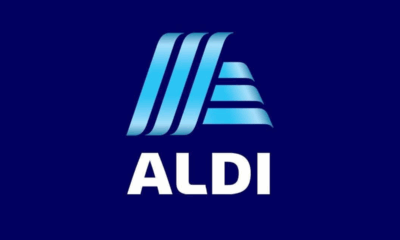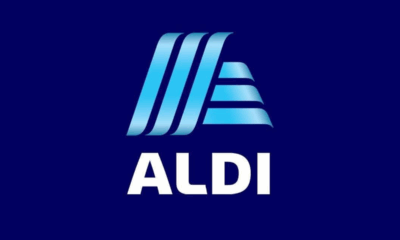Business
First Direct Shifts to Digital-Only Statements, Impacting 1.9M Customers

More than 1.9 million customers of **First Direct** will soon experience a significant change to their savings account management. Beginning on **September 1**, the online bank will transition from paper statements to digital-only statements. This move is part of a broader trend among financial institutions aiming to enhance efficiency and reduce environmental impact.
In an email sent to customers last week, First Direct announced that all savings account holders will no longer receive paper statements via post. Instead, they will have the ability to view, download, and print their statements through the bank’s app or online banking platform. This change solely affects those with savings accounts, while other account-related information may still be sent by mail.
Customer reactions have been mixed, with many expressing frustration on social media platforms. One long-time customer remarked, “Been with **@firstdirect** for 25 years. They’re fine except for ONE thing. I want a paper statement.” Another user added, “I just got an email from First Direct telling me they will no longer send me paper bank statements,” while a third commented, “So irritating!”
### How the Transition Works
First Direct clarified that the transition to digital statements will occur automatically, meaning customers do not need to take any action to implement this change. To ensure they receive notifications when new statements are available, customers are advised to update their email addresses in the ‘profile’ section of the app or the ‘my details’ section of online banking. Once a statement is ready, customers will receive an email prompting them to log in and access their new statement.
For those who prefer to continue receiving paper statements, First Direct has made provisions for customers to opt back into this service post-September 1. This can be done by logging into their online banking, selecting “my details,” and updating their statement preferences. Assistance is available through customer service in the “message us” section of online banking or via the app.
### Trends in Banking: A Broader Perspective
First Direct’s shift to digital statements is not an isolated occurrence. Other banks are also revisiting their account management strategies. Earlier this week, **Starling Bank** announced a temporary halt on the opening of second personal current accounts, a feature that many customers relied upon to manage their finances effectively. Starling stated that this pause is necessary while they implement improvements to their services.
Additionally, **NatWest** is increasing fees associated with cash and cheque transactions, effective **August 30**. Specifically, cash payments into and out of business accounts will see a fee rise from £0.70 to £0.95 per £100. Cheque payments will increase from £0.70 to £0.75, regardless of the processing method.
In a related move, **Santander** recently disclosed plans to charge customers an annual fee of **£120** for accounts that were previously advertised as “free forever.” This decision has left many small business owners and self-employed individuals feeling misled, as they are now required to pay **£9.99** per month starting in October for business accounts.
### Maximizing Savings Potential
With many savings accounts currently offering low-interest rates, individuals are encouraged to explore options that maximize their savings. According to **Lana Clements**, Editor at Sun Savers, flexible easy access savings accounts allow customers to withdraw funds as needed, though these accounts may have fluctuating interest rates.
For those willing to lock their money away for a fixed period, a fixed-rate account typically offers better interest returns. Regular savings accounts also present an opportunity, often yielding higher rates for individuals committed to making monthly contributions. Comparison websites like **Moneyfactscompare.co.uk** and **Moneysupermarket** can help users identify the best rates available across various account types.
As these changes unfold, customers are urged to stay informed and proactive in managing their finances, ensuring their savings are working effectively for them in an evolving banking landscape.
-

 Entertainment3 months ago
Entertainment3 months agoAnn Ming Reflects on ITV’s ‘I Fought the Law’ Drama
-

 Entertainment4 months ago
Entertainment4 months agoKate Garraway Sells £2 Million Home Amid Financial Struggles
-

 Health3 months ago
Health3 months agoKatie Price Faces New Health Concerns After Cancer Symptoms Resurface
-

 Entertainment3 months ago
Entertainment3 months agoCoronation Street’s Carl Webster Faces Trouble with New Affairs
-

 Entertainment3 months ago
Entertainment3 months agoWhere is Tinder Swindler Simon Leviev? Latest Updates Revealed
-

 World2 weeks ago
World2 weeks agoBailey Announces Heartbreaking Split from Rebecca After Reunion
-

 Entertainment4 months ago
Entertainment4 months agoMarkiplier Addresses AI Controversy During Livestream Response
-

 Entertainment2 weeks ago
Entertainment2 weeks agoCoronation Street Fans React as Todd Faces Heartbreaking Choice
-

 Science1 month ago
Science1 month agoBrian Cox Addresses Claims of Alien Probe in 3I/ATLAS Discovery
-

 Health4 months ago
Health4 months agoCarol Vorderman Reflects on Health Scare and Family Support
-

 Entertainment4 months ago
Entertainment4 months agoKim Cattrall Posts Cryptic Message After HBO’s Sequel Cancellation
-

 Entertainment3 months ago
Entertainment3 months agoOlivia Attwood Opens Up About Fallout with Former Best Friend





















